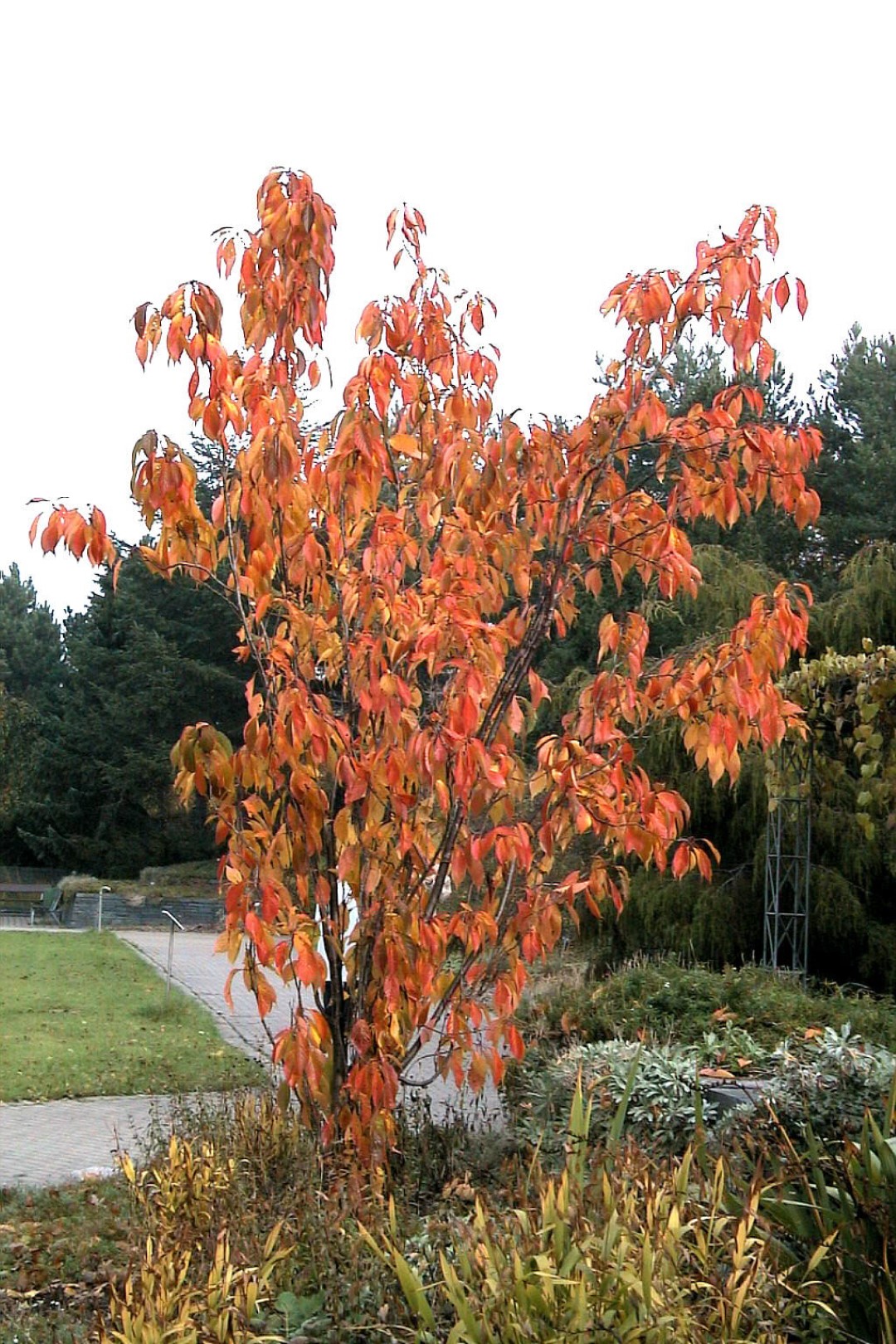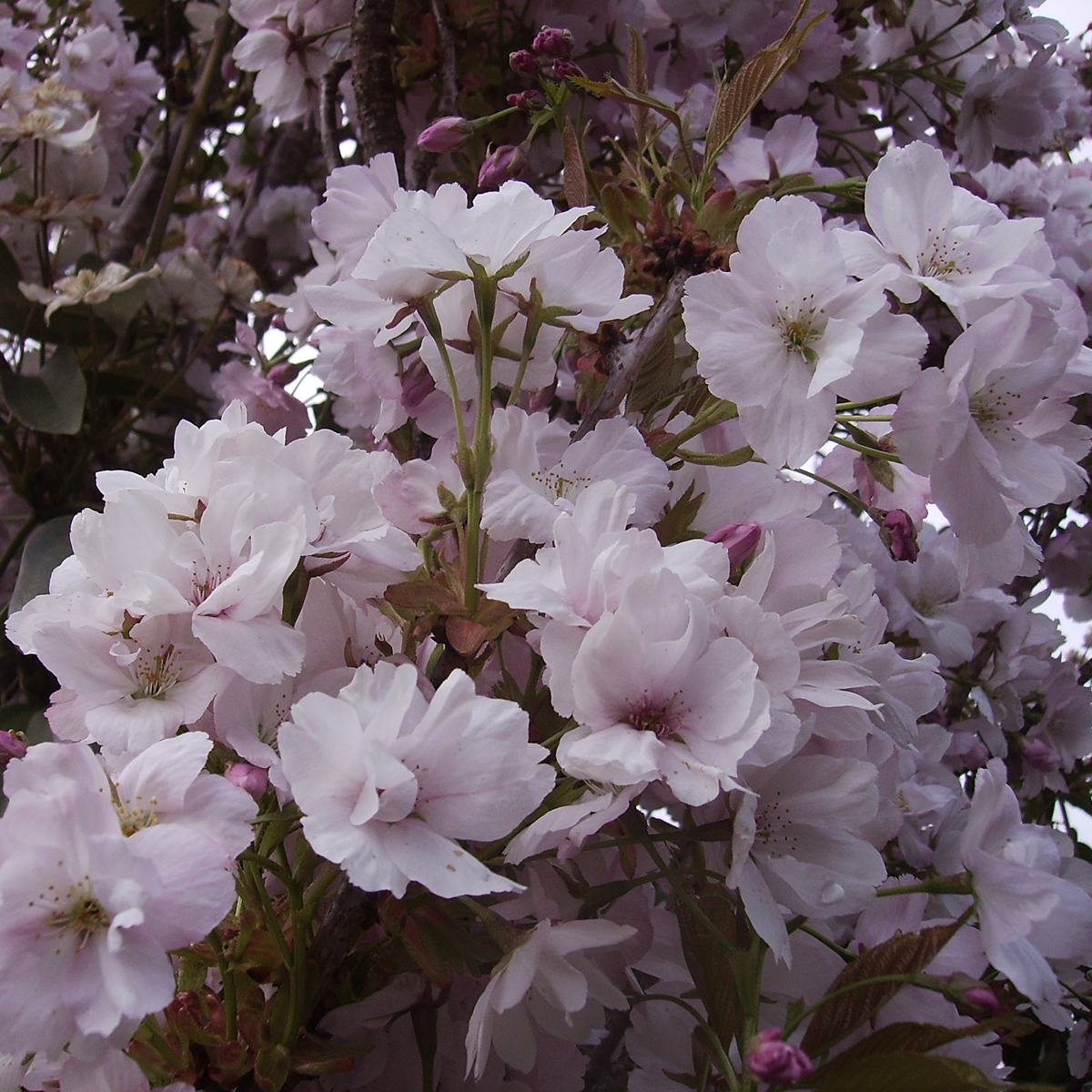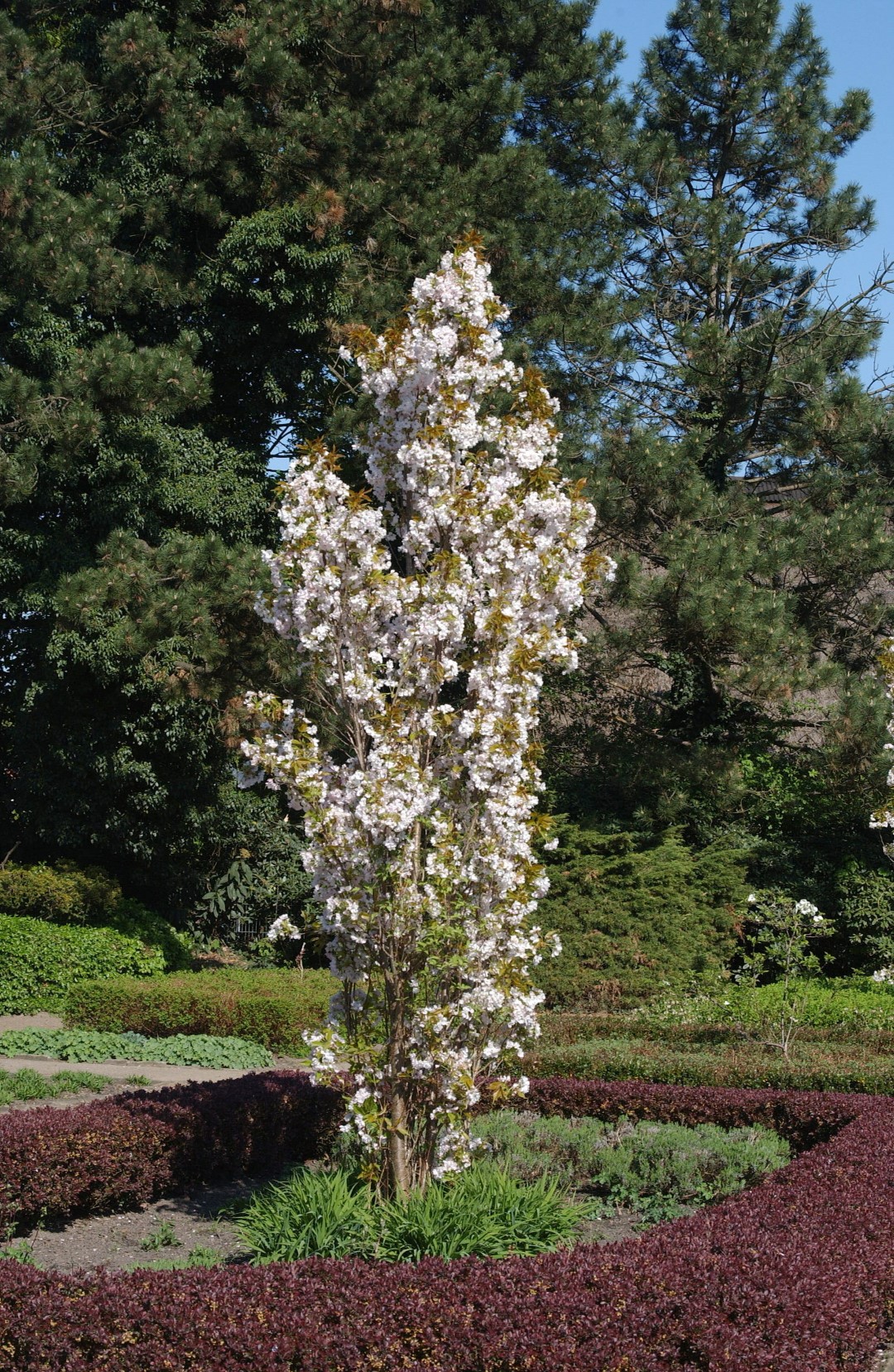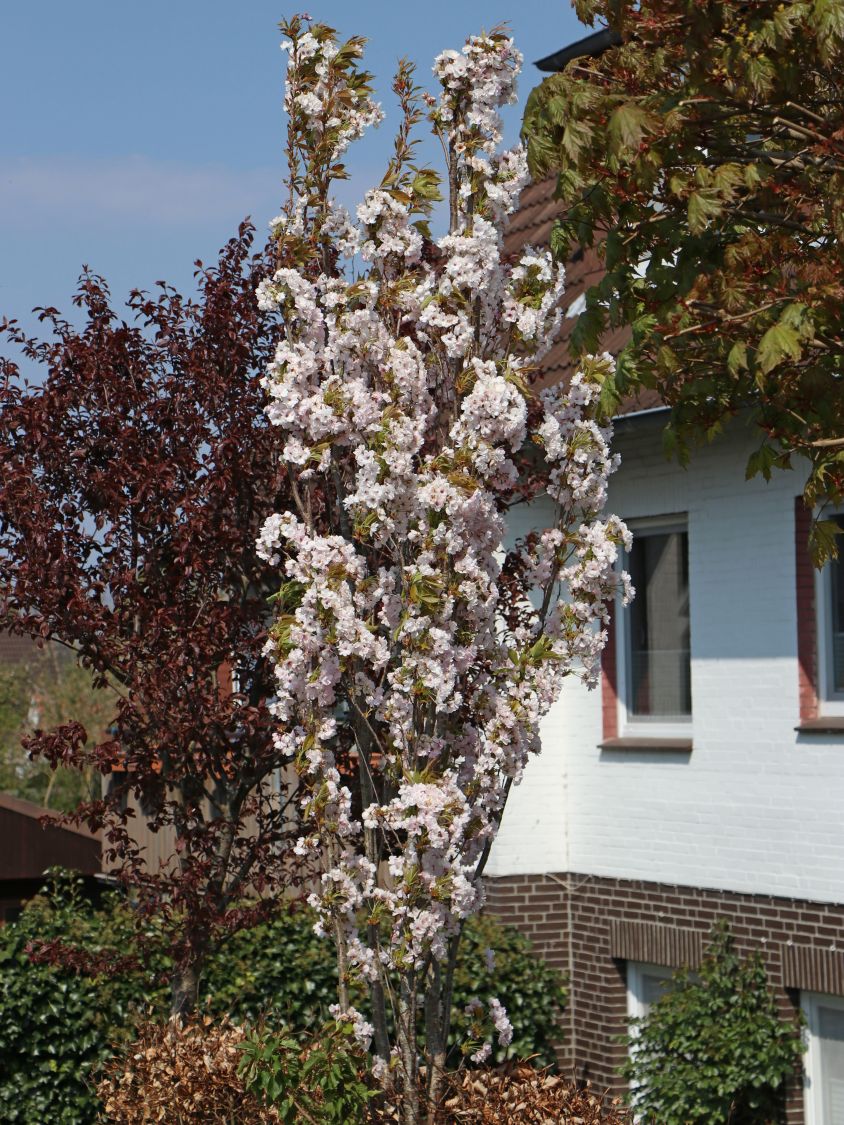
Prunus serrulata 'Amanogawa' snel bestellen? Fleur.nl
Featured. BUG FILES. Redback Spider. (Latrodectus hasselti) BIRD FILES. Black-throated Magpie-jay. (Calocitta colliei) Check out the largest plant identification database in the world. Read plant and insect reference guides at Daves Garden.

Prunus serrulata 'Amanogawa' Prunus serrulata 'Amanogawa' Van den Berk Pépinières
Ideal for small gardens, award-winning Prunus 'Amanogawa' is a small, narrowly columnar deciduous tree boasting profuse, semi-double pale pink flowers hugging closely the erect branches in mid to late spring. Sweetly fragrant, the cherry blossoms stand upright at the side of the branches. Opening from pink buds, the large saucer-shaped blooms, almost 2 in. across (4.5 cm), count up to 6-15 petals.

Prunus serrulata amanogawa How to grow & care
Japanese cherry 'Amanogawa' (Prunus serrulata 'Amanogawa') Care Guide. The common name of the Japanese cherry hybrid japanese cherry 'Amanogawa' translates as 'heaven's river' in Japanese. This is an apt name because of the heavenly pink blossoms that bedeck this flagpole cherry. Flagpole cherries are hybrids that take a slender upright growth shape in marked contrast to the rounded bushy.

Prunus serrulata Amanogawa Cerisier du Japon à floraison remarquable
Foliage. Deciduous. Habit. Columnar upright. Genus. Prunus can be deciduous or evergreen trees or shrubs with showy flowers in spring, and often good autumn foliage colour. Some have edible fruit in autumn, and a few species have ornamental bark. Name status.

Prunus Serrulata 'Amanogawa', Flowering Cherry Tree 'Amanogawa' uploaded by Leonplantaddict
Prunus Serrulata 'Amanogawa' is a small flowering Japanese cherry with very narrow, pillar-shaped growth and large semi double pink flowers which smell of almonds in late mid-spring. This tree is a popular tree for very small gardens as it is so narrow, rarely exceeding 2m (6ft) wide with an overall height of 6m (20ft)..

Prunus " Serrulata amanogawa" Rasadnik „Jelena”
Prunus serrulata amanogawa grow and care - tree of the genus and Prunus also known as Amanogawa Japanese Flowering Cherry, Prunus serrulata amanogawa perennial deciduous plant used as ornamental plant for the bloom, can use also as bonsai tree, grow in temperate climate and cold area some can grow mediterranean or subtropical climate and growing in hardiness zone 5-9.

Prunus " Serrulata amanogawa" Rasadnik „Jelena”
The Japanese Flagpole Flowering Cherry tree ( Prunus serrulata 'Amanogawa') is a beautiful, hardy, deciduous ornamental cherry tree that is perfect for small landscapes. The cultivar is very old, dating back to 1886. 'Amanogawa' means 'Heaven's River' in Japanese, referring to the galaxy full of stars, which looks like a river.

Prunus serrulata ‘Amanogawa’ (Stebrasta japonska češnja) Drevesnica KURBUS STARŠE
Diagnostic Characteristics: Leaves are 2-5" long, 0.5-1.25" wide, simple, alternate, lanceolate, and finely serrated with a petiole that has 2 to 4 glands. Leaves emerge yellowish green, stay green for the summer, and trun a showy orange and red in the fall. Flowers are semi-double, pale-pink, and slightly fragrant, appearing in spring.

Prunus serrulata Amanogawa Cerisier du Japon à floraison remarquable
Prunus serrulata amanogawa is a plant that is native to Japan. It is a member of the Rosaceae family and is also known as the Japanese Cherry. The plant is a deciduous shrub that can grow to be about 10 feet tall. The leaves of the plant are oval shaped and have a toothed margin. The flowers of the plant are white and have 5 petals. The fruit of the plant is a small, dark red drupe.

Prunus serrulata 'Amanogawa' Prunus serrulata 'Amanogawa' Van den Berk Pépinières
Find Amanogawa Flowering Cherry (Prunus serrulata 'Amanogawa') in Issaquah Seattle Bellevue Redmond Renton Sammamish Washington WA at Squak Mountain Nursery (Oriental Cherry, Japanese Cherry) 425.392.1025

Japanese Cherry Prunus serrulata Amanogawa
Prunus 'Amanogawa' (Japanese Flowering Cherry) Prunus 'Amanogawa' is an award-winning, columnar deciduous tree, ideal for small gardens. It's known for its profuse, semi-double pale pink flowers that bloom in mid to late spring. The fragrant, large, saucer-shaped blossoms open from pink buds, maturing to near-white with a purplish.

Prunus serrulata 'Amanogawa', Japanische Kirsche Bauer Baumschulen AG
Prunus 'Amanogawa' is a beautiful ornamental cherry tree. It has an upright or columnar habit, hence its common name, the flagpole cherry. In late spring it's smothered in semi-double, pale pink blossom, popular with pollinators. The foliage is green-bronze in spring and fresh green in summer. In autumn, the leaves turn orange and red.

Prunus serrulata 'Amanogawa' Northern Irelands Specialist Tree Nursery
Prunus serrulata 'Amanogawa' Best for Hardiness Zones: 5 through 8: Mature sizes: 20 to 25 feet tall, 6 to 8 feet wide : Growth habit: Upright or columnar, hence the name 'Flagpole.' Bloom time: Around springtime, usually April and May: Flower color: Soft pink to white blossoms: Preferred soil: Loamy, moist but well-drained: Light.

Säulenkirsche 'Amanogawa' Prunus serrulata 'Amanogawa' Baumschule Horstmann
Find Amanogawa Flowering Cherry (Prunus serrulata 'Amanogawa') in Vancouver Victoria Burnaby Penticton Coquitlam British Columbia BC at GardenWorks (Oriental Cherry, Japanese Cherry)

Prunus Serrulata 'Amanogawa' / Japanische Säulenkirsche Prunus serrulata Amanogawa
Amanogawa has a growth habit not unlike a Lombardy Poplar. The flowers are pink, nicely fragrant and single to semi-double, sometimes emerging into small black fruits. Young leaves are yellow-green. Height can reach 20 feet, spread a modest 4 to 5 feet. Rounded to horizontal, deciduous tree with beautiful, coppery-red, glossy, peeling bark.

Prunus Serrulata Amanogawa Säulenzierkirsche Säulenkirsche
Prunus serrulata, commonly called Japanese flowering cherry or oriental cherry, is a medium sized tree growing to 50-75' tall in its native habitat. It features non-fragrant white flowers in spring, pea-sized blackish fruits in late summer and ovate to lanceolate green leaves (to 5" long). This species is rarely sold in commerce, however.